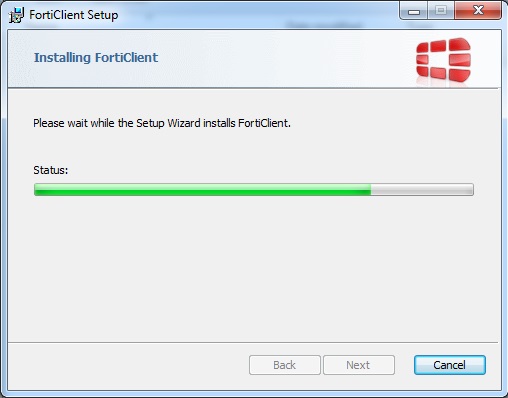
"C:\Program Files\Fortinet\FortiClient\FCConfig.exe" -m vpn -f **backup. bat with the following content, and place it in the same folder as your backup file and : msiexec /i "FortiClientVPN.msi" /passive /quiet INSTALLLEVEL=3 DESKTOPSHORTCUT=0 /NORESTART Once tested, head to the padlock symbol in the FortiVPN client to elevate to Administrator, then choose Settings (cog icon) then Backup.Ĭreate a. We also recommend you to check the files before installation. The download was scanned for viruses by our system.

The version of FortiClient you are about to download is 7. This download is provided to you free of charge. Once installed, configure the VPN per the settings that are required for the connection and test. The package you are about to download is authentic and was not repacked or modified in any way by us. The MSI file will be downloaded to %temp%\.Ĭopy the MSI file and store in a packaging dir, (eg C:\Package\), then continue with the installation. Click through the prompts and stop just before installing the actual application. Run the executable you downloaded (eg FortiClientVPNOnlineInstaller_6.4.exe). Next, we need to get hold of the “offline installer” from the installer that you just downloaded. Downloading the installerįirst, you’ll need to obtain the FortiClient VPN EXE: Link: I wasn’t able to find a full guide to silently deploy the client and silently configure a VPN profile, so decided to write one. If, like the rest of us, you haven’t got access to the whole suite, you’ll be using the FortiClient VPN standalone.

If you’re fortunate enough to have already made an investment in Fortinet EMS, go right ahead and use EMS for your config and deployment. Fortinet make it really simple to use their premium EMS product to deploy and manage the free FortiClient VPN.


 0 kommentar(er)
0 kommentar(er)
